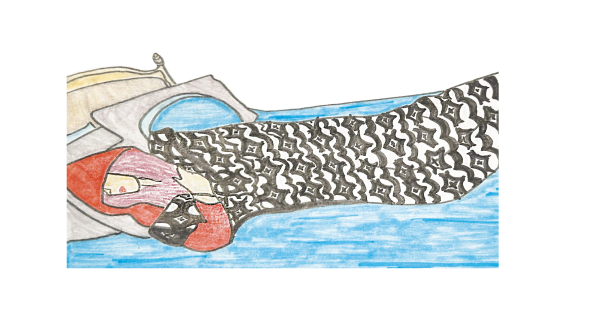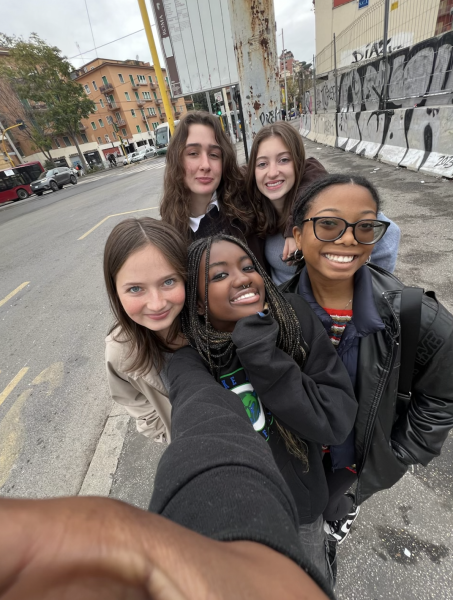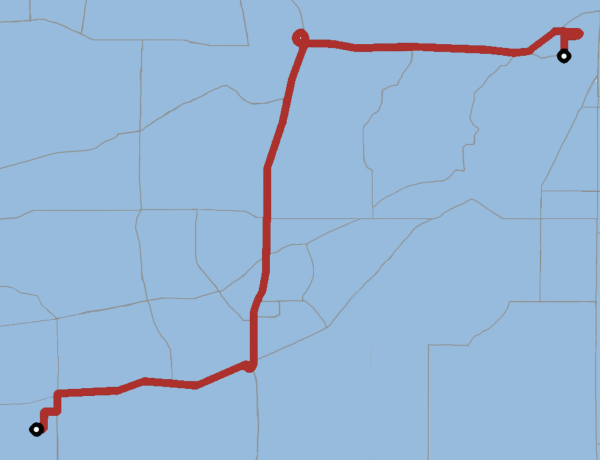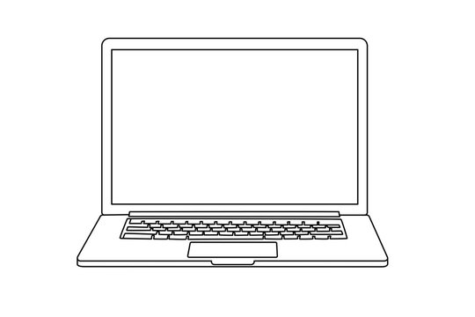Understanding purpose of advisory
Goals to reinvent overlooked advisory time

Shenelle Haines’ advisory visits a sculpture near Target Field, the home of the Minnesota Twins. The advisory that found the most things from the checklist (given out before the walk began) will receive a prize in the weeks following the annual Sophomore Walk.
An often overlooked part of our daily routine is advisory. While some students consider it a waste of time that could be spent doing homework, many teachers and students would argue that it is an integral part of the day.
Senior advisor Kate Nichols has been an advisor for nine years and therefore has experienced a variety of advisory personalities over the years. Nichols says, “I had some groups who were very awkward together and didn’t like being together, and that made me feel really awkward.” About her current advisory, she says, “My advisory is fun, they like each other a lot and they joke around a ton. I think they actually like hanging out together but they like to joke that they don’t like being together. In terms of the actual advisory planning, advisors don’t actually do all that much.”
Nichols and the other advisors read over a plan that they receive from their grade deans, and facilitate the activities. However, the long line of planning and communication from deans to advisors to students can get confusing and disjointed. Nichols reflects, “Sometimes I get a little bit confused about what my role should be. Sometimes it’s all about hanging out, joking around, and getting closer with the kids, and other times it’s a serious talk or program. It can be hard to switch back and forth because the kids never know what to expect.”
In any case, Nichols really enjoys advisory time: “I think it’s a relationship that’s very different than the one I have with students in the classroom, and it’s fun too. I want to be more of a mentor for them.”
Junior advisor, Jim Mahoney has been a dean for ten years in addition to being an advisor for 13. Mahoney describes advisory planning as coming primarily from the deans: “Deans try to structure advisory to create grade-specific programming where advisors have some freedom and some programs. Sometimes we’ll have all school programming too. But the planning as an advisor should be minimal.”
Mahoney believes that the most important job for an advisor is to “Be a positive advocate. There are times where I get involved in a school situation or when a student is struggling with something and needs an ear to process with. I like to think that advisory is a place where they can do that. It’s a place where I can be with students instead of at them.” Advisory should be “a time to decompress from school and get into conversations, for fun or for programming,” says Mahoney. “It’s not supposed to be a time for doing homework.”
Mahoney also hints at the prospect of advisory programming changing in the near future, with the goal of making it a more intentional time of the day. The new “Wayfinder initiative” is spearheaded by school counselor Erin Adams, who has additional knowledge and purpose to share about the program. “Being at school, and learning is a really emotional experience. We want to help young people know themselves better, understand their environment better, and be able to cope with those challenges that inevitably come along in high school,” says Adams. “We’re looking at how we can provide some structure and specific objectives that would help students feel like advisory is more useful and meaningful to them.”
Although a lot of the planning is still up in the air, Adams believes that there is enough curriculum that the school may “change the amount of time advisory meets” or test “if some pieces could be worked into Health class, English class, and Senior Seminar.”
The question that this new curriculum raises is: How important is advisory time where students can just hang out? Nichols believes that “it’s nice for everyone to have a break in the day when they can just be with a group and feel at home. I hope the new advisory doesn’t put an end to all advisory hangouts. I know they may not seem valuable, but they are.” Adams believes a balance between hangout time and curriculum should be achieved, saying, “I recognize the value in free time and want to preserve that as well.”
Adams plans to pilot the new program during the second semester with some groups of students who would like to volunteer to participate in some lessons and provide feedback. If that is successful, she plans to implement the program next year.













